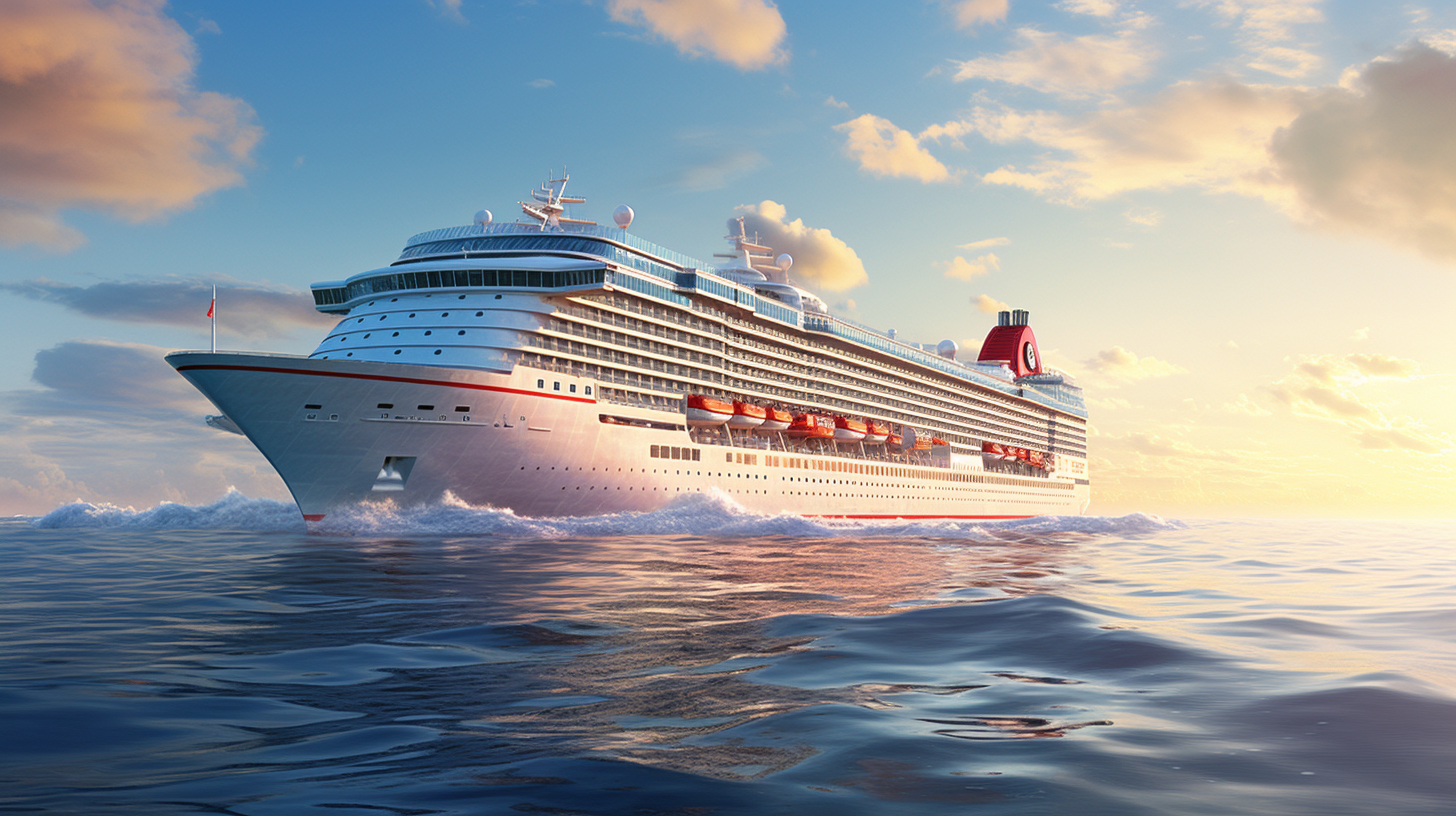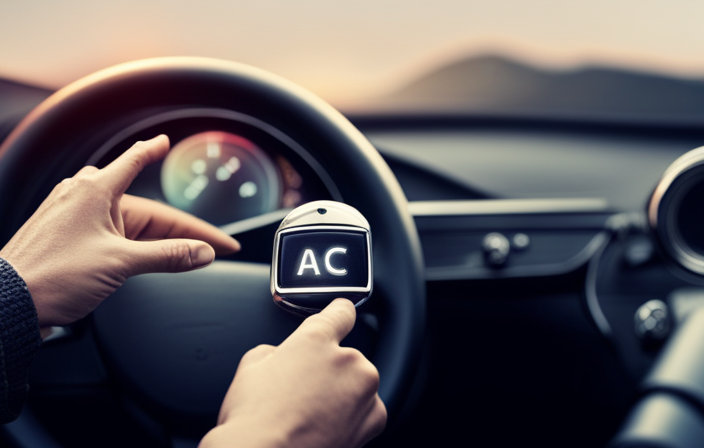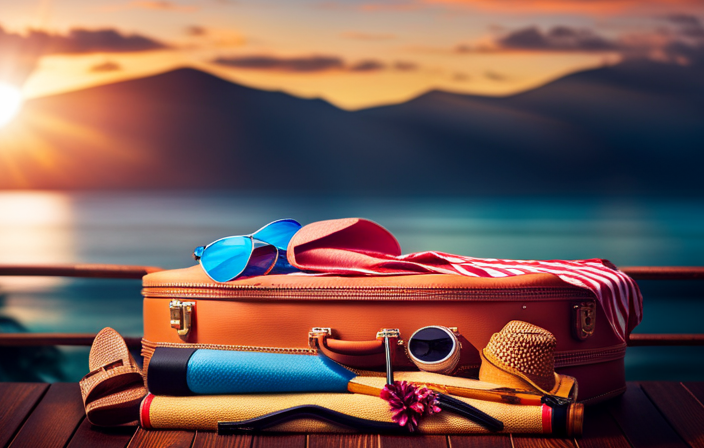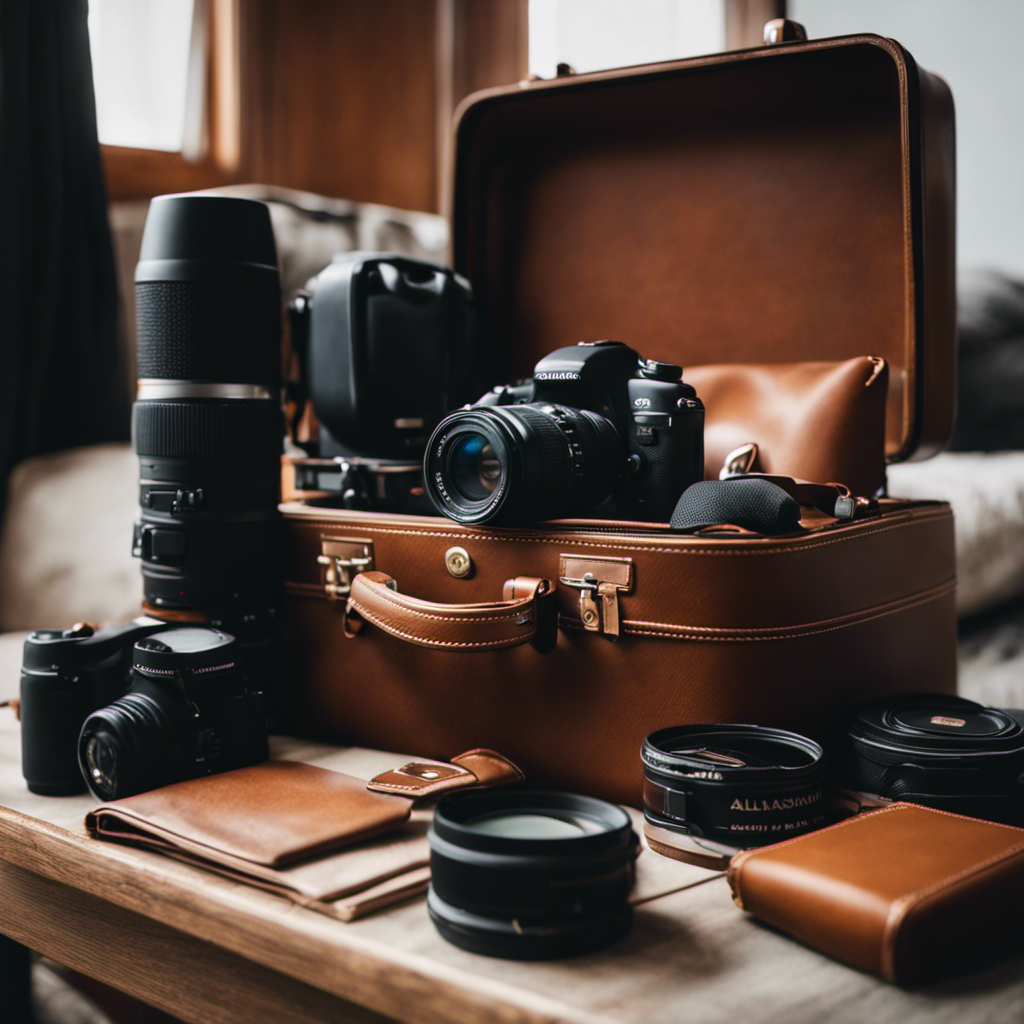Introduction
Greetings, adventurous navigators! Are you prepared to journey through the vast cosmos of cruise ships and discover some unique mysteries? You’ve arrived at the perfect spot. In this blog post, our goal is to address a variety of uncommon questions that frequently arise in discussions about cruise ships.
From mysterious jail cells to peculiar bathroom habits, we’ll leave no stone unturned. So please sit back, relax (preferably with a fruity drink in hand), and get ready for some unexpected answers as we unravel the mysteries of cruising like never before! Whether you’re a seasoned sailor or dreaming of your first voyage, prepare for an enlightening and entertaining journey through these lesser-known aspects of life on the high seas.
Ahoy there – let’s set sail on our quest to answer your most burning cruise ship cabin questions!
What Is a Cruise Ship Jail?
Cruise ships are like floating cities, complete with restaurants, entertainment venues, and even their own jails. Yes, you read that right – cruise ship jails exist! But before you start picturing a dark and dingy cell below deck, let’s explore what exactly a cruise ship jail is.
Contrary to popular belief, cruise ship jails are not designed for criminals or dangerous individuals. Instead, they serve as temporary holding areas for passengers who have broken the rules or engaged in disruptive behavior. These “jails” are often small rooms or cabins that have been repurposed to temporarily house unruly passengers until the situation can be resolved.
But why would someone end up in a cruise ship jail? Well, there are various reasons. It could be due to excessive drinking leading to disorderly conduct or physical altercations on board. Passengers may also find themselves confined if they fail to comply with safety regulations such as skipping mandatory drills or tampering with life-saving equipment.
Although it might sound intimidating at first glance, spending time in a cruise ship jail is not meant to be punitive but rather serves as a way for the crew to maintain order and ensure the safety of all passengers on board. Depending on the severity of the offense and its impact on other guests’ experience, individuals held in these temporary holding areas may face consequences ranging from warnings and fines to being disembarked at the next port.
So while it’s certainly an unusual aspect of cruising life that most people don’t think about when booking their vacation at sea, knowing that there’s a system in place helps create a sense of security onboard these massive vessels.
Cruise ships operate under strict guidelines set by international maritime laws and regulations enforced by governing bodies such as the International Maritime Organization (IMO). Safety is paramount – after all, no one wants their dream vacation turning into chaos because of lax enforcement.
In conclusion (without using those exact words), although cruise ship jails might sound like a scene from a movie, they play an essential role in maintaining
Cruise Ship Mortality Rate
Cruise Ship Mortality Rate: When it comes to cruising, safety is always a top concern for travelers. You might be wondering about the mortality rate on cruise ships and if there are any risks involved. Let’s dive into this topic and shed some light on the matter.
1. The reality is that incidents resulting in death aboard cruise ships are relatively rare. Cruise lines have strict safety protocols in place to ensure passenger well-being. From medical facilities staffed with qualified professionals to rigorous training for crew members, measures are taken to minimize any potential risks.
2. However, it’s important to remember that accidents can happen anywhere, including on a cruise ship. While the chances of experiencing a fatal incident during your vacation are extremely low, it’s still crucial to follow all safety instructions provided by the crew and exercise caution while onboard.
3. One factor that contributes to the lower mortality rate on cruise ships is their adherence to international maritime regulations. These rules outline specific safety standards that must be met by all vessels operating at sea, including those carrying passengers.
4. In addition, modern technology has greatly improved overall safety at sea. Cruise ships are equipped with state-of-the-art navigation systems and communication devices that allow them to quickly respond in case of emergencies or adverse weather conditions.
5. Another aspect worth mentioning is the comprehensive medical facilities available onboard most cruise ships today. They typically have fully stocked pharmacies and medical teams capable of handling various health issues that may arise during a voyage.
6 . It’s also worth noting that many deaths reported on cruise ships are often related to natural causes or pre-existing health conditions rather than accidents or incidents directly caused by being onboard a ship.
7 . While no activity can guarantee absolute safety, cruising remains an incredibly safe method of travel when considering its vast popularity and number of voyages undertaken each year without incident.
In conclusion, The mortality rate on cruise ships is relatively low due to stringent safety measures, adherence to international regulations, advanced technology, and onboard medical facilities. While accidents and medical issues can occur, the risk is minimal when compared to other types of travel or recreation.
Ship or Boat?
When it comes to cruising, one common question that often arises is whether a cruise ship should be referred to as a “ship” or a “boat.” While the terms may seem interchangeable to some, there are actually distinct differences between the two. Let’s take a closer look at what sets them apart.
1. Size Matters:
Typically, ships are larger than boats in terms of both length and capacity. Cruise ships can accommodate thousands of passengers and crew members, boasting multiple decks and amenities like restaurants, theaters, and swimming pools. On the other hand, boats tend to be smaller vessels used for recreational purposes or short trips.
2. Purpose:
Ships generally serve specific functions such as transportation of goods or people over long distances. They are designed for extended journeys across oceans or seas with facilities for overnight stays onboard. Boats, on the other hand, are typically used for leisure activities like fishing or sailing in coastal waters.
3. Construction:
The construction methods also differ between ships and boats. Ships are built using steel or aluminum materials to ensure durability in harsh marine environments while accommodating large cargo loads or passenger capacities. Boats can be made from various materials including fiberglass, wood, or even inflatable materials suitable for their intended use.
4. Stability:
Due to their size and design features like stabilizers, cruise ships offer greater stability compared to most boats which tend to have less stability due to their smaller size and lighter construction.
5: Licensing Requirements:
In many countries around the world including the United States Coast Guard (USCG), there is a distinction between boat licenses (for recreational vessels) and ship licenses (for commercial vessels). These licensing requirements further emphasize the difference between these two types of maritime transport.
6: Nautical Terminology:
Nautically speaking when referring specifically about lifeboats aboard cruise ships they’re commonly known as tenders whereas small motorized watercrafts attached at ports during excursions ashore are called ‘ship’s boats’. This further distinguishes the terminology used between ships
The Meaning Behind Muster Drill
Picture this: you’re on a cruise ship, soaking up the sun and sipping on a fruity cocktail. Life is good. But wait! Before you can fully relax and indulge in all the fun activities onboard, there’s something important that needs to happen – the muster drill.
What exactly is a muster drill? Well, it’s essentially a safety briefing that takes place at the beginning of your cruise. During this drill, passengers are required to gather at designated areas on deck and listen to instructions from crew members regarding emergency procedures.
Now, you might be wondering why such a formal-sounding event is necessary when all you want to do is unwind and have a great time. The answer is simple: safety first! Cruise ships go through meticulous preparations for any potential emergencies or accidents that may occur while out at sea.
During the muster drill, passengers are instructed on how to properly put on life jackets and where to assemble in case of an evacuation. This knowledge could potentially save lives in real-life situations, so it’s definitely not something to take lightly!
But here’s an interesting fact: did you know that “muster” actually means “to gather” or “assemble”? So essentially, during the muster drill, everyone gathers together as one big community with the shared goal of staying safe should anything unexpected happen.
It’s also worth noting that each passenger has their own designated assembly station based on their cabin location. This ensures that everyone knows exactly where they need to go in case of an emergency – no room for confusion or chaos here!
Now imagine this scenario: Bill W., Dorothy, and Jimmy are enjoying their first-ever cruise vacation together. They’ve just settled into their cabins when they hear an announcement over the loudspeaker about participating in the muster drill.
Curious as ever, Bill W. asks Dorothy what it means. She explains its purpose and emphasizes how crucial it is for everyone’s safety. Jimmy, being the jokester that he is, chimes in with a comment about how important it is to know the muster drill rules.
The three of them laugh, but they also understand that this isn’t something to take lightly. After all, in an emergency situation, knowing the proper muster drill procedures can help save lives – and that’s no joke!
So there you have it: the meaning behind muster drill. Now that you know why it exists and how important it is, make sure to pay attention during your ship’s safety briefing. And try not to forget Jimmy’s wise words – “Know the rules!”
The Story of Bill W, Dorothy, and Jimmy
The story of Bill W, Dorothy, and Jimmy is one that has become a legend among cruise ship enthusiasts. It all started on a sunny day in the Caribbean when they boarded their first-ever cruise together. Little did they know that this trip would be filled with unexpected twists and turns.
As soon as they stepped foot onto the ship, Bill W couldn’t help but marvel at its grandeur. The towering structure seemed like a floating city, ready to whisk them away to exotic destinations. Dorothy was equally amazed by the sheer size of the vessel – it felt like stepping into a different world altogether.
Their excitement quickly turned to confusion when an announcement came over the intercom for everyone to gather for something called a “muster drill”. They had no idea what it meant or why it was important, but they dutifully followed the crowd to their designated meeting point.
Once there, they learned that a muster drill is essentially an emergency preparedness exercise. Passengers are required to familiarize themselves with safety procedures and locate their life jackets in case of any unforeseen events while out at sea. It was reassuring yet slightly nerve-wracking for them as first-time cruisers.
One evening during dinner, Bill W struck up a conversation with Jimmy, who happened to be seated next to him at their assigned table. They quickly bonded over their love for adventure and shared stories about previous cruises they had been on.
Jimmy revealed some insider knowledge about cruise ships – apparently, there’s such thing as a cruise ship jail! He explained that unruly passengers or those who pose risks can be detained in designated holding areas until authorities can handle the situation appropriately. This revelation left Bill W and Dorothy both intrigued and slightly amused by this hidden aspect of cruising life.
Another mystery surrounding cruise ships is whether or not saltwater is used in toilets onboard. Well, according to Jimmy’s vast experience sailing across various oceans, most modern-day vessels use a vacuum system that does not rely on saltwater. This was a relief for Bill W and Dorothy, who had been worried about their drinking water supply while out at sea.
Bill W, Dorothy, and Jimmy continued to explore the different ships they sailed on, indulging in the unique experiences each one had to offer. They forged a strong bond over the course of their many cruises together, and soon enough they were being referred to as “The Cruise Trio”. Their adventures became legendary and remain an inspiration for those looking for a unique way to explore the world.
Saltwater in Cruise Ship Toilets?
Saltwater in cruise ship toilets? It’s a question that may sound strange at first, but it’s actually quite common for people to wonder about. So let’s dive into this topic and explore the truth behind saltwater in cruise ship toilets.
First of all, it’s important to understand that most cruise ships do not use saltwater in their toilets. Instead, they use regular freshwater just like any other flushing system you would find on land. The misconception may arise from the fact that some older ships used seawater for flushing purposes, but this practice has become rare nowadays.
So why would anyone consider using saltwater in the first place? Well, one reason could be the abundance of seawater surrounding the ship. Some argue that utilizing saltwater instead of freshwater can help conserve resources on board. However, there are several reasons why this is not a practical solution.
One major issue with using saltwater is corrosion. Salt content can damage plumbing systems over time and lead to expensive repairs or replacements. Additionally, when mixed with human waste and chemicals commonly found in toilets, saltwater can create an unpleasant smell throughout the vessel.
Furthermore, using freshwater allows for better control over hygiene and sanitation standards on board. Cruise lines have strict regulations regarding cleanliness and health practices to ensure a safe environment for passengers and crew members alike.
But what about those instances where passengers claim they’ve encountered salty water while using their cabin bathrooms? Well, this could be due to various factors such as maintenance issues or temporary malfunctions within specific cabins or sections of the ship.
It’s also worth noting that modern cruise ships have advanced filtration systems onboard which convert seawater into potable drinking water used throughout all areas of the vessel including showers, sinks, pools etc., so there should never be any confusion between fresh drinking water and toilet flushing water sources!
In conclusion (without saying “in conclusion”), it’s safe to say that most cruise ships do NOT use saltwater in their toilets. Instead, they rely on conventional freshwater systems for flushing purposes. Any instances in which saltwater is encountered could be attributed to maintenance issue or temporary malfunction within specific cabins or sections of the ship.s or temporary malfunctions, but it should not be considered the norm.
Source of Water on A Cruise Ship
Water, the elixir of life. We need it to survive, and our bodies are made up of mostly water. So when you’re cruising the high seas on a magnificent cruise ship, have you ever wondered where all that water comes from? Let’s dive in and explore the source of water on a cruise ship.
1. Seawater desalination: Cruise ships are surrounded by vast oceans, but drinking seawater directly is not an option due to its high salt content. That’s why most cruise ships have onboard desalination plants. These plants use advanced technology to remove salt and impurities from seawater, converting it into fresh, drinkable water for guests and crew members alike.
2. Water storage tanks: Once the seawater has been treated through desalination, it is stored in large tanks located within the bowels of the ship (no pun intended). These tanks can hold thousands upon thousands of gallons of water, ensuring there is always an ample supply for everyone on board.
3. Shore connections: When docked at port cities or during certain parts of their journey, some cruise ships may connect to shore-based sources for freshwater supply rather than relying solely on their own desalination plants.
4. Rainwater harvesting: Some eco-friendly cruise ships have implemented rainwater harvesting systems as part of their sustainability efforts. They collect rainwater through specially designed roofs or other surfaces and store it for various uses such as irrigation or even supplementing their freshwater supplies.
5. Recycling wastewater: Onboard treatment facilities play a crucial role in recycling wastewater generated by showers, sinks, laundry machines, and other sources throughout the ship. This recycled wastewater undergoes treatment processes before being reused for non-drinking purposes like flushing toilets or cleaning decks.
6. Green technologies: As environmental consciousness grows stronger within the industry,recent advancements include innovative technologies such as onboard filtration systems that help reduce water consumption by recycling and reusing it more efficiently.
7. Conservation measures: Cruises ships have implemented various water conservation measures, such as installing low-flow fixtures and water-saving appliances, training staff to reduce water waste, monitoring and controlling water usage rates, and educating guests about the importance of conserving water.
Waste Management on A Cruise Ship
When it comes to waste management on a cruise ship, you might be surprised at just how organized and efficient the process is. After all, with thousands of passengers and crew members on board, there’s bound to be quite a bit of waste generated during each voyage. But fear not! Cruise lines have put systems in place to handle this issue.
First off, let’s talk about what happens to your trash once you throw it away in your cabin or any other area of the ship. The garbage is collected by the hardworking crew members who make their rounds multiple times per day. They ensure that all waste bins are emptied regularly and that everything is disposed of properly.
But where does all this waste go? Well, modern cruise ships are equipped with advanced onboard incinerators that can burn most types of solid waste. These incinerators operate at extremely high temperatures, ensuring complete combustion and minimal environmental impact.
However, certain items cannot be safely burned and must be handled differently. For example, hazardous materials like batteries or chemicals are treated separately according to strict regulations. Special procedures are followed to ensure their safe disposal once the ship reaches port.
Another important aspect of waste management on a cruise ship is recycling. Most modern vessels have dedicated recycling programs in place for paper products, plastics, glass bottles, aluminum cans, and more. Recycling bins can typically be found throughout the ship so guests can easily separate their recyclable items from regular trash.
To further minimize its environmental footprint, some cruise lines have implemented innovative technologies such as wastewater treatment systems. These systems treat graywater (from sinks) and blackwater (from toilets) before discharging them back into the ocean following rigorous purification processes.
Speaking of toilets…you may wonder if saltwater is used in cruise ship toilets instead of fresh water since they’re surrounded by an endless supply! Surprisingly enough though – nope! Freshwater tanks provide the water for flushing toilets and other daily uses on board. Cruise ships have onboard desalination plants to produce fresh water from sea water.
All in all, cruise ships are getting better and better when it comes to waste management. With advanced incinerators, dedicated recycling programs, and innovative wastewater treatment systems in place – they’ve made remarkable progress in reducing their environmental impact over the years. So don’t worry, your next cruise vacation won’t leave too much of a footprint!
Conclusion
In this article, we’ve answered some offbeat cruise ship questions that you may have been curious about. We hope that these answers have provided you with a deeper understanding of life on board a cruise ship. Whether it’s the existence of a cruise ship jail or the source of water on board, there are always interesting facts to uncover.
One question that often comes up is whether there is a cruise ship jail. While it may sound intriguing, the reality is that most modern cruise ships do not have dedicated jails onboard. Instead, they rely on security personnel and cooperation with authorities at ports of call to handle any legal issues.
Another interesting topic is the mortality rate on cruise ships. Contrary to popular belief, the mortality rate on cruises is relatively low compared to other forms of travel or daily life situations. Cruise lines prioritize passenger safety and take measures such as regular drills and medical facilities onboard to ensure a safe environment for everyone.
A common confusion arises when distinguishing between ships and boats. Although both terms refer to vessels used for transportation on water, the main difference lies in their size and purpose. Ships are generally larger than boats and are designed for long-distance travel across open waters.
You might be wondering what muster drill means during your time aboard a cruise ship. Muster drill refers to an important safety practice where passengers gather at designated locations to familiarize themselves with emergency procedures and learn how to properly use life jackets in case of an evacuation situation.
Let’s dive into an interesting story about Bill W, Dorothy, and Jimmy – three significant figures in Alcoholics Anonymous (AA). Bill W attended his last AA meeting aboard a Holland America Line ship before passing away shortly after docking in Miami Beach in 1971. Years later, his wife Dorothy scattered his ashes from another HAL vessel while cruising near Puerto Rico – fulfilling Bill’s wish for his remains “to be spread upon those waters.”
Share and Subscribe
H3: Share and Subscribe
We hope that we’ve been able to shed some light on these offbeat cruise ship questions and provide you with interesting insights into the world of cruising. Remember, there’s always more to discover and learn about this unique mode of travel.
If you found this article helpful or entertaining, please consider sharing it with your friends and fellow travel enthusiasts. And don’t forget to subscribe to our newsletter for more exciting content and updates on all things cruise-related.
So, until next time, bon voyage! Happy sailing!










